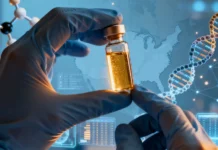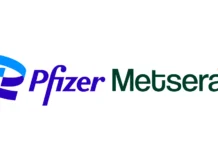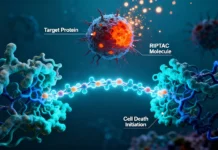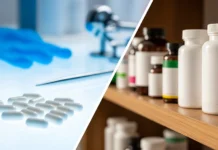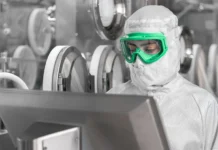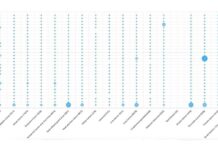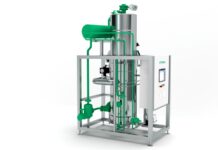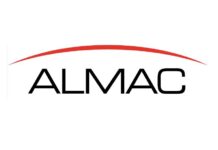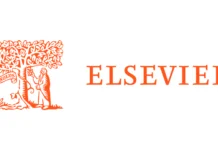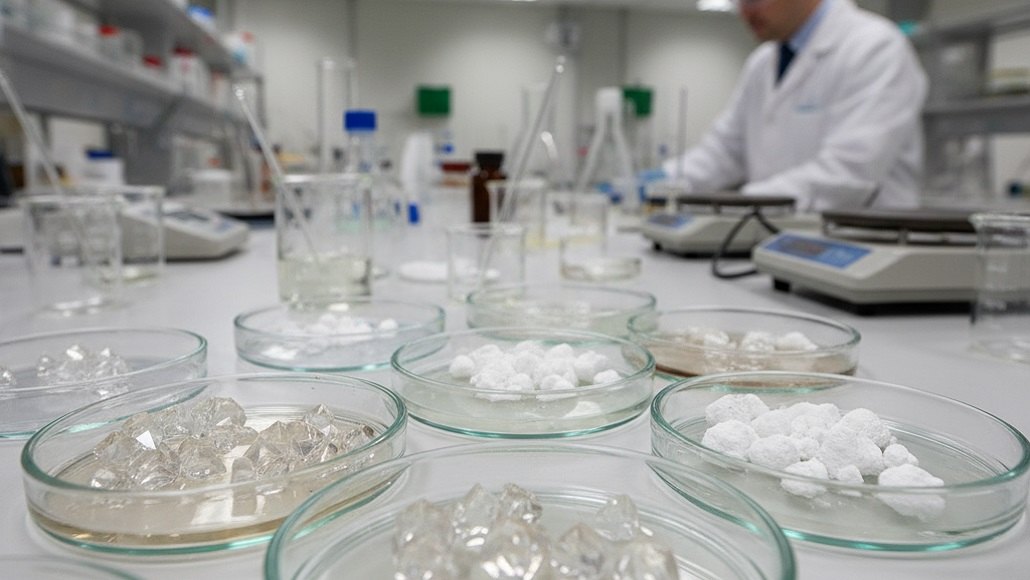The pharmaceutical industry confronts a formidable obstacle that threatens to derail promising therapeutic candidates before they reach patients. Poor aqueous solubility afflicts over 70% of new chemical entities in development pipelines, creating fundamental challenges for drug absorption and bioavailability that traditional formulation approaches inadequately address. Formulation strategies poorly soluble drugs have evolved from simple techniques into sophisticated scientific disciplines combining material science, physical chemistry, and pharmaceutical engineering to transform otherwise unmarketable compounds into clinically successful products.
The Magnitude of the Solubility Challenge
Drug solubility fundamentally determines dissolution rate in gastrointestinal fluids, the prerequisite for absorption across intestinal epithelium into systemic circulation. The Noyes-Whitney equation describes this relationship, indicating that dissolution rate depends directly on solubility and surface area while inversely relating to diffusion layer thickness. When drugs demonstrate insufficient aqueous solubility, the dissolved concentration may never reach levels required for therapeutic effect, regardless of dose administered.
The biopharmaceutics classification system categorizes drugs based on solubility and permeability characteristics, with Class II (low solubility, high permeability) representing the most common problematic category among development candidates. These compounds possess favorable membrane permeability suggesting good absorption potential if solubilization obstacles can be overcome. Class IV drugs compound the challenge with both poor solubility and poor permeability, requiring formulation strategies poorly soluble drugs that address both limitations simultaneously.
The trend toward increasingly complex drug structures exacerbates solubility challenges. Modern drug discovery emphasizes target specificity and potency, often achieved through larger molecular weights, increased lipophilicity, and more rigid molecular structures. These characteristics, while enhancing receptor binding and selectivity, simultaneously reduce aqueous solubility. Approximately 40% of marketed drugs and 90% of compounds in discovery pipelines demonstrate poor water solubility, with the proportion increasing as discovery methods evolve.
Poor solubility manifests multiple negative consequences throughout drug development and clinical use. Preclinical toxicology studies require high doses to establish safety margins, but poorly soluble compounds may prove impossible to formulate at necessary concentrations. Clinical trials encounter variable bioavailability producing inconsistent pharmacokinetic profiles that complicate dose selection and obscure efficacy signals. Even after approval, poorly soluble drugs suffer from food effects, high inter-patient variability, and suboptimal therapeutic performance that compromise clinical utility.
Particle Size Reduction Strategies
Decreasing particle size represents a foundational approach to improving dissolution through increased surface area available for interaction with dissolution media. The Noyes-Whitney equation predicts that reducing particle diameter from 100 micrometers to 1 micrometer increases surface area one hundredfold, proportionally accelerating dissolution rate. This simple principle underlies multiple formulation strategies poorly soluble drugs employ to achieve therapeutic bioavailability.
Conventional milling techniques including ball milling, jet milling, and hammer milling reduce particle size through mechanical attrition, producing particles typically in the 1 to 50 micrometer range. Ball mills contain rotating drums filled with grinding media that crush drug particles through impact and attrition forces. Jet mills propel particles through high-velocity air streams, causing collisions between particles and mill surfaces that fracture them into smaller fragments. While straightforward and economical, these methods generate heat potentially degrading thermolabile compounds and produce relatively broad particle size distributions with limited ability to reach submicron dimensions.
Micronization represents refined milling producing particles predominantly below 10 micrometers. Fluid energy milling employs compressed gas jets creating particle collisions in turbulent air streams. The spiral jet mill accelerates particles around a circular grinding chamber, with centrifugal forces segregating larger particles toward the periphery for additional grinding while smaller particles exit through central outlets. Micronization significantly improves dissolution for many poorly soluble drugs, enabling viable oral formulations where previous approaches failed.
Nanosuspension technology extends particle size reduction into the nanometer range, producing particles typically between 100 and 500 nanometers. This dramatic size reduction provides enormous surface area enhancements dramatically accelerating dissolution. The nanocrystalline state also demonstrates apparent solubility increases due to increased dissolution pressure described by the Ostwald-Freundlich equation, where smaller particles exhibit higher effective solubility than larger crystals of identical material.
Media milling produces nanosuspensions by dispersing coarse drug particles in liquid media containing grinding beads, typically submillimeter ceramic or polymeric spheres. High-energy agitation causes beads to collide with drug particles, fracturing them into progressively smaller dimensions. Milling continues for hours to days, gradually reducing particle size to nanoscale while incorporating stabilizers preventing reaggregation. The process accommodates diverse drug types and achieves predictable size distributions, though extended processing times and potential contamination from grinding media represent limitations.
High-pressure homogenization generates nanosuspensions by forcing drug suspensions through narrow gaps at extremely high pressures, typically 1000 to 2000 bar. The intense shear forces and cavitation effects fracture particles into nanocrystals. Multiple passes through homogenizers progressively reduce particle size, with 10 to 25 cycles often required to achieve target dimensions. This technique avoids contamination from grinding media and operates continuously, facilitating scale-up to manufacturing volumes.
Crystal Engineering and Solid Form Selection
Drug molecules may crystallize in different arrangements termed polymorphs, each exhibiting distinct physical properties including melting point, density, dissolution rate, and solubility. Polymorphs share identical molecular composition but different three-dimensional packing arrangements in crystal lattices, analogous to how graphite and diamond both consist of carbon atoms arranged differently. The existence of multiple polymorphs creates opportunities for formulation strategies poorly soluble drugs to exploit more favorable solid forms.
Thermodynamic stability determines which polymorph represents the lowest energy state under given conditions. Metastable polymorphs possess higher energy than stable forms, conferring enhanced solubility and dissolution rates due to increased chemical potential. However, metastable forms tend toward conversion to stable polymorphs over time, particularly when exposed to moisture, elevated temperatures, or mechanical stress. Formulation development must balance the dissolution advantages of metastable forms against stability risks that could compromise product performance during storage.
Pharmaceutical salts represent a chemical modification approach where ionizable drugs react with counterions forming ionic compounds with altered physicochemical properties. Salt formation can dramatically enhance solubility through disruption of crystal lattices, reduced crystallinity, and increased wettability. Weak acids pair with basic counterions such as sodium, potassium, or amine bases, while weak bases form salts with organic or inorganic acids including hydrochloride, sulfate, or organic acid salts.
The selection of appropriate counterions considers multiple factors beyond solubility. Hygroscopicity represents a common challenge, as highly hygroscopic salts absorb atmospheric moisture, potentially causing physical instability or chemical degradation. Chemical stability requires assessment, as some salt forms demonstrate enhanced or reduced stability compared to free base or acid forms. Manufacturing properties including crystallinity, particle morphology, and flow characteristics influence processability and must align with intended manufacturing approaches.
Cocrystals represent an emerging crystalline form where drug molecules associate with coformers in defined stoichiometric ratios within shared crystal lattices. Unlike salts, cocrystals form through hydrogen bonding or other non-ionic interactions, expanding possibilities beyond ionizable drugs. The coformer selection dramatically influences resulting properties, with different coformers producing cocrystals spanning wide solubility ranges. Regulatory acceptance of cocrystals has improved as understanding of their distinct characteristics versus simple physical mixtures has matured.
Amorphous Solid Dispersions
The amorphous state lacks the long-range molecular order characterizing crystalline materials, instead featuring random molecular arrangements resembling frozen liquids. This structural disorder confers thermodynamic instability and higher Gibbs free energy compared to crystalline forms. The increased energy state manifests as enhanced apparent solubility and faster dissolution, as amorphous drug requires no energy to disrupt crystal lattices before dissolving. However, this same instability creates challenges, as amorphous materials tend toward crystallization that would negate solubility advantages.
Amorphous solid dispersions address stability concerns by dispersing amorphous drug within polymer matrices that inhibit molecular mobility and prevent crystal nucleation. The polymer serves multiple stabilizing functions including increasing glass transition temperature above storage and body temperatures, separating drug molecules physically to prevent aggregation required for crystallization, and providing thermodynamic stabilization through favorable drug-polymer interactions. Successful amorphous solid dispersions maintain drugs in amorphous states throughout product shelf life while releasing them rapidly upon contact with dissolution media.
Spray drying represents the most widely employed manufacturing technique for amorphous solid dispersions. The process dissolves drug and polymer in organic solvents, then atomizes the solution into fine droplets in heated chambers. Rapid solvent evaporation produces dried particles containing drug molecularly dispersed within polymer matrices. The extremely fast drying kinetically traps amorphous forms before crystallization can occur, while intimate mixing at molecular scale optimizes stabilization. Spray drying accommodates diverse drug-polymer combinations and scales readily to commercial production, though equipment costs and organic solvent requirements represent considerations.
Hot-melt extrusion provides a solvent-free alternative, mixing drug and polymer above their glass transition temperatures then extruding the molten mixture through dies. Cooling below glass transition temperature solidifies the extrudate preserving amorphous character. The absence of solvents eliminates environmental concerns and drying requirements, simplifying manufacturing and avoiding residual solvent specifications. However, thermal exposure may degrade heat-sensitive compounds, and high viscosities of polymer melts require specialized equipment.
Polymer selection critically influences amorphous solid dispersion performance. The glass transition temperature must exceed storage temperature substantially, typically requiring values above 50°C to provide adequate stability margins. Solubility parameters guide prediction of drug-polymer miscibility, with similar solubility parameter values suggesting favorable interactions and stable single-phase systems. Ionizable polymers including hydroxypropyl methylcellulose acetate succinate and methacrylic acid copolymers provide both molecular stabilization and precipitation inhibition upon dispersion dissolution, maintaining supersaturated drug concentrations longer than neutral polymers.
Drug loading capacity represents another critical consideration. Higher drug loading reduces the amount of formulation required to deliver therapeutic doses, improving patient convenience. However, excessive drug loading overwhelms polymer stabilization capacity, leading to phase separation or crystallization. Optimization balances loading maximization against stability requirements, typically achieving loadings between 10% and 50% depending on drug-polymer compatibility.
Lipid-Based Formulation Approaches
Lipid-based delivery systems leverage lipophilic excipients to solubilize poorly water-soluble drugs, presenting them in forms facilitating absorption. These formulation strategies poorly soluble drugs encompass simple solutions in oils, self-emulsifying systems that spontaneously form fine emulsions upon contact with aqueous gastrointestinal fluids, and sophisticated lipid-polymer hybrid systems combining advantages of both platforms.
The lipid formulation classification system categorizes these approaches based on composition. Type I formulations consist of drugs dissolved in oils without surfactants, representing the simplest approach but limited to highly lipophilic compounds soluble in neat oils. Type II formulations add surfactants enabling self-emulsification, dramatically expanding applicability. Type IIIA and IIIB systems incorporate increasing proportions of hydrophilic surfactants and cosolvents, trading initial drug loading capacity for improved dispersibility and reduced sensitivity to digestion variability.
Self-emulsifying drug delivery systems spontaneously form fine emulsions when dispersed in aqueous media under gentle agitation, producing droplet sizes typically between 100 and 300 nanometers. The self-emulsification process requires no external energy beyond mild agitation, occurring through interfacial instability as water penetrates oil-surfactant mixtures. Upon dilution in gastrointestinal fluids, these systems form fine dispersions presenting dissolved drugs with enormous interfacial areas promoting absorption.
Self-microemulsifying formulations employ higher surfactant concentrations and lower oil content compared to self-emulsifying systems, generating even smaller droplets typically below 100 nanometers. These microemulsions appear optically clear or translucent due to droplet sizes below visible light wavelengths. The ultra-fine dispersions provide maximal surface area for drug dissolution and absorption, though higher surfactant levels may cause gastrointestinal irritation requiring careful formulation optimization.
Digestion of lipid-based formulations by pancreatic lipase produces fatty acids and monoglycerides that combine with bile salts forming mixed micelles. These endogenous colloidal structures solubilize drugs, maintaining them in solution throughout absorption processes. Drugs formulated in lipid systems benefit from this natural solubilization mechanism, though formulation performance depends on food status and individual bile secretion patterns. Digestible lipid formulations generally demonstrate more predictable performance than non-digestible systems, as digestion products actively promote drug solubilization and absorption.
Complexation Techniques
Cyclodextrins, cyclic oligosaccharides derived from enzymatic starch degradation, possess unique molecular structures featuring hydrophobic central cavities surrounded by hydrophilic exteriors. The cavity dimensions accommodate guest molecules of appropriate size, forming inclusion complexes where drug molecules insert into cyclodextrin cavities. This molecular encapsulation shields hydrophobic drug regions from aqueous environments, dramatically improving apparent solubility while maintaining drug in forms readily available for membrane absorption.
Three natural cyclodextrins containing six, seven, or eight glucose units (alpha, beta, and gamma-cyclodextrin respectively) demonstrate different cavity sizes accommodating different guest molecules. Beta-cyclodextrin shows optimal size for many drugs, though limited water solubility constrains applications. Chemical modifications including hydroxypropyl, sulfobutylether, and methyl substitutions improve cyclodextrin solubility while maintaining or enhancing complexation capabilities. These derivatized cyclodextrins, particularly hydroxypropyl-beta-cyclodextrin and sulfobutylether-beta-cyclodextrin, find widespread pharmaceutical use.
Complex formation typically achieves rapid equilibrium between free drug, free cyclodextrin, and drug-cyclodextrin complex in solution. The equilibrium constant describes complex stability, with higher values indicating stronger association. Formulation strategies poorly soluble drugs employing cyclodextrins must provide sufficient cyclodextrin concentrations to solubilize required drug quantities while avoiding excessive cyclodextrin that could cause osmotic effects or renal toxicity.
Manufacturing methods for cyclodextrin complexes include kneading, coprecipitation, freeze-drying, and spray drying. Kneading physically mixes drug and cyclodextrin with minimal water, promoting complex formation through intimate contact. Coprecipitation dissolves components in solution then removes solvent, producing solid complexes. Freeze-drying and spray drying offer solvent removal with minimal thermal stress, valuable for thermolabile compounds. The selection considers drug stability, desired product characteristics, and manufacturing economics.
Supersaturating Formulation Systems
Supersaturation describes states where dissolved drug concentrations exceed equilibrium solubility. This thermodynamically unstable condition creates concentration gradients favoring absorption, as supersaturated solutions possess chemical potentials elevated above saturated solutions. However, supersaturation is inherently unstable, with systems tending toward precipitation that eliminates the enhanced driving force for absorption. Formulation strategies poorly soluble drugs exploit supersaturation while incorporating precipitation inhibitors extending the duration of supersaturated states.
Amorphous solid dispersions generate supersaturation upon dispersion dissolution. The rapid release of amorphous drug creates concentrations exceeding crystalline drug solubility. Polymers within formulations serve dual purposes, initially maintaining drug in amorphous states and subsequently inhibiting precipitation after dispersion dissolution. The precipitation inhibition mechanism involves adsorption onto crystal nuclei blocking further growth, increasing nucleation activation energy, and reducing molecular mobility in solution.
Cocrystal formulations may produce supersaturation when cocrystals dissolve faster than pure drug crystals but drug precipitation lags behind cocrystal dissolution. The window of supersaturation persists until drug concentration reaches saturated levels or precipitation occurs. Excipients maintaining supersaturation extend this window, enhancing absorption opportunities. The approach offers advantages over amorphous forms including superior stability, though achievable supersaturation levels typically remain more modest.
Precipitation inhibitor selection considers multiple factors. Cellulosic polymers including hydroxypropyl methylcellulose and hydroxypropyl cellulose demonstrate broad precipitation inhibition capability. Polyvinylpyrrolidone and polyvinylpyrrolidone-vinyl acetate copolymers offer alternative polymer classes with distinct interaction profiles. Recent research suggests optimal precipitation inhibitors vary among drugs, necessitating case-by-case evaluation. Combinations of polymers sometimes demonstrate synergistic effects exceeding individual polymer performance.
Formulation Selection Decision Framework
Rational selection among formulation strategies poorly soluble drugs requires systematic evaluation of drug properties, development stage, and commercial considerations. Early development often emphasizes speed and flexibility, favoring approaches amenable to small-scale preparation and rapid iteration. Later stages prioritize manufacturability, stability, and patient acceptability, potentially prompting formulation changes toward platforms better aligned with commercial requirements.
Drug substance properties including solubility, permeability, dose, stability, and lipophilicity guide initial formulation approach selection. Highly lipophilic drugs with doses below 50 mg may succeed with simple lipid solutions or cyclodextrin complexation. Drugs requiring doses above 500 mg challenge loading capacities of most solubilization approaches, potentially necessitating particle size reduction or salt formation. Thermolabile compounds poorly tolerate hot-melt extrusion or spray drying at elevated temperatures, suggesting alternative manufacturing approaches.
Development timelines influence formulation selection, as complex platforms requiring specialized manufacturing equipment or extensive process development may prove incompatible with aggressive development schedules. Spray-dried amorphous solid dispersions offer relatively predictable development paths supported by extensive precedent and available equipment. Novel approaches lacking established precedents carry higher risk despite potential advantages.
Regulatory and Intellectual Property Considerations
Different formulation strategies poorly soluble drugs invoke varying regulatory scrutiny and intellectual property implications. Salt forms of previously approved free bases or acids may qualify for 505(b)(2) regulatory pathways in the United States, potentially accelerating approval by leveraging existing safety data. Novel formulations including nanosuspensions or amorphous solid dispersions typically require full new drug applications supported by comprehensive nonclinical and clinical development programs.
Intellectual property considerations influence formulation selection for generic developers versus innovator companies. Innovative formulations offer patent protection extending commercial exclusivity beyond active ingredient patents, valuable for innovators seeking lifecycle management. Generic developers must navigate existing patents while developing bioequivalent formulations, potentially requiring alternative approaches compared to innovator formulations.
Conclusion
Formulation strategies poorly soluble drugs have evolved into sophisticated scientific disciplines enabling viable pharmaceutical products from compounds that would otherwise fail due to inadequate bioavailability. The diverse toolkit spanning particle size reduction, crystal engineering, amorphous solid dispersions, lipid-based systems, complexation, and supersaturating formulations provides options addressing different drug characteristics and development contexts. Rational selection among approaches considers drug properties, development stage, manufacturing capabilities, regulatory pathways, and commercial requirements. As understanding of solubilization mechanisms deepens and novel technologies emerge, formulation scientists will continue expanding possibilities for transforming poorly soluble compounds into therapeutically effective medications benefiting patients.



